Spring 2019 Newsletter
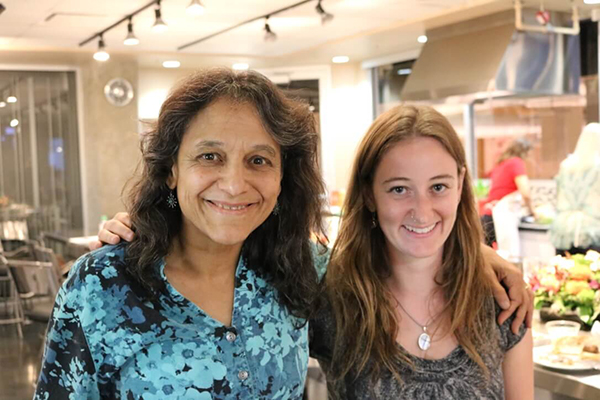
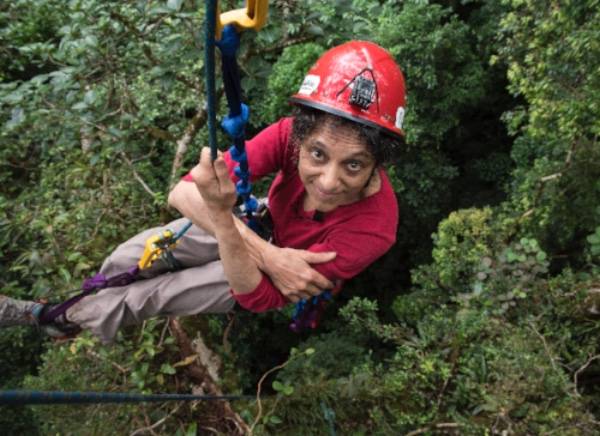
STEMAP Director Nalini Nadkarni was featured in The Guardian describing her field work in the Monteverde cloud forest of Costa Rica. Arguably one of the most sensitive ecosystems, Nalini describes how her study site and the species living there can be real life examples of the detrimental effects of climate change. Check out the full article here.
Nalini was also featured in the University of Utah’s Our DNA magazine where her numerous public engagement projects are highlighted. From initiating conservation projects in prisons to starting her own eco-fashion line, public engagement is imbedded in Nalini’s work as a forest ecologist. Click here for the full article.
Researcher Spotlight: Interview with STEMAP’s External Evaluator
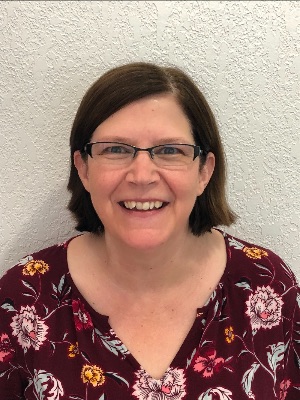
How can I determine whether I’ve reached my public engagement objectives?
Evaluation is critical in determining whether you’ve reached your public engagement objectives and in identifying areas for improvement; however, conducting proper evaluation of your engagement work can be daunting. We sat down with STEMAP’s external evaluator, Becky Carroll of Inverness Research, to discuss how scientists can effectively and efficiently evaluate their engagement activities.
As an external evaluator, Becky looks at the entirety of a project or program- from the early proposal stages to the conclusion, and, when possible, the life beyond. Evaluation helps projects troubleshoot design and implementation elements that may not be working as well as they could be, and helps document the contributions of the project. Evaluation provides useful information to the project, the scientists involved, and the public engagement field as a whole.
During our conversation, Becky highlighted two reasons for evaluating engagement activities. First, evaluation can help answer the questions of a funder, project leader, or department head. This oftentimes includes describing the outcomes of an engagement activity or effects on public audiences. Second, evaluation can help scientists understand whether they’ve reached their engagement objectives and identify areas for improvement.
Becky enjoys working with STEMAP because of the variety of groups scientists reach. She stresses that scientists should think about evaluation early on because of the range of audiences and venues they may interact with, “Be thinking about how to ask your questions during your engagement design.” To shape their activity, scientists should keep the goal of their evaluation in mind, as well as who the evaluation data is for. This will help scientists choose an evaluation tool that is appropriate for the audience and venue. For example, a lengthy paper survey may not be appropriate for a scientist engaging on a whitewater rafting trip. Having a colleague who can take notes during your activity can be very helpful in situations where a survey is not feasible. Scientists can also find helpful evaluation resources at citizenscience.org, informalscience.org, and stelar.edc.org. When in doubt, keep things simple and informal – even a conversation at the end of an event can be beneficial.
If a scientist is planning to work with an external evaluator, Becky stresses that the key is to talk with them early and often. Building a relationship with an evaluator gives scientists support, helps with gathering data, and aids in making their research clear to diverse audiences. “Different evaluators have different ways of working, too, so find someone you’re comfortable working with.”
Thanks to Becky Carroll for her valuable work on the STEM Ambassador Program!
2018 STEM Ambassador Receives Sustainability Research Award
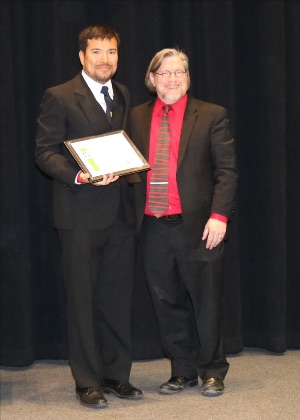
Ambassador Daniel Mendoza received the Sustainability Research Award from the The Sustainability Office and Alta Ski Area for his outstanding commitment to equity in sustainability! As an Ambassador, Daniel worked with Neighborhood House, an adult and children care center, to provide fun and engaging air quality activities at their annual Summer Celebration.
Congratulations Daniel!
Ecologist Connects with Parents
Ecologist Ben Koch studies antibiotic resistant bacteria at Northern Arizona University. He worked with STEMAP to publish an article in the parenting blog Fatherly. In this witty and informative piece, Ben describes how his research has affected how he prepares food for his family. Click here to read the full article on Fatherly!
This publication is part of a collaboration between STEMAP and the Ecological Society of America’s Frontiers in Ecology and the Environment journal to extend the work of Frontiers authors to public audiences.
Thanks to Ben Koch (Northern Arizona University) and Sue Silver (Ecological Society of America) for their collaboration on this project!
STEMAP Impact Report
Since its start three years ago, STEMAP has made leaps and strides in bridging science and society. With the addition of the University of Washington cohort, an online cohort, and the Center for Chemical Innovation (CCI) cohort underway, STEMAP engagement events are reaching communities all over the nation!
Check out the Impact Report and see how STEMAP has grown!
Webinar to Recognize Online/UW Cohorts
On February 5th, the STEM Ambassador Program hosted a webinar to highlight the achievements of the online and University of Washington cohorts. STEMAP Director Nalini Nadkarni, University of Washington liaison John Meyer, STEMAP Program Manager Caitlin Weber, and Ambassadors Alice Boyle, Kendall FitzGerald, Sarah Apple, and Dominic Caputo each gave short presentations on their experiences with public engagement.
Thanks to all who participated!
STEMAP at the National Science Foundation Principal Investigator Meeting

Last month, Caitlin Weber presented STEMAP’s accomplishments at the National Science Foundation (NSF) Principal Investigator meeting for projects funded by NSF’s Advancing Informal STEM Learning Program.
Held in Washington DC, this meeting provides an excellent opportunity to learn about other science education and public engagement projects, discuss possible collaborations, and report outcomes. Caitlin shared STEMAP’s training and engagement activities during a panel discussion on supporting scientists in developing innovative public engagement activities to fulfill NSF Broader Impacts requirements. She also reported STEMAP outcomes during the meeting’s project showcase.
Click here to view the STEMAP poster from the showcase.
STEMAP Online and University of Washington Cohorts
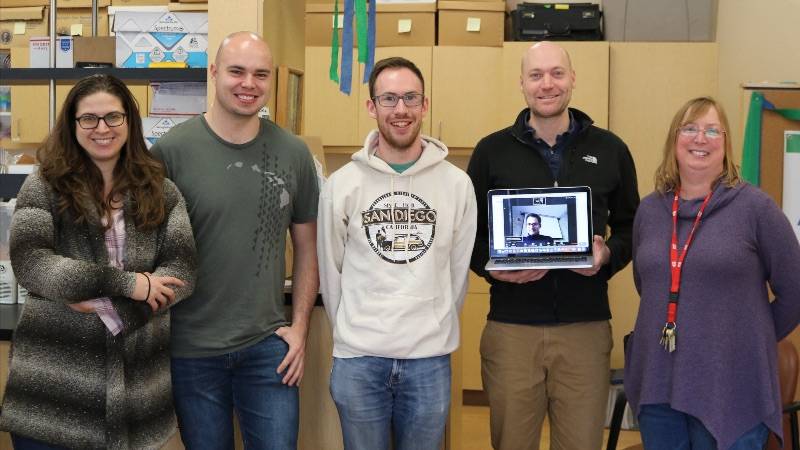
The Centers for Chemical Innovation (CCI) is a dynamic research program that integrates innovation, education, broadening participation, and informal science communication.
STEMAP is providing the Electrochemistry Center, based primarily at the University of Utah in collaboration with researchers at Scripps and the University of Minnesota, with public engagement training.
At this stage, the CCI scientists have identified the focal groups they’d like to engage and completed their immersion visit to community venues to inform their engagement activities. We look forward to outstanding engagement activities by this cohort!
STEM Ambassador Reflections
These articles were written by STEM Ambassadors about their public engagement work.
Arianna Soldati on Chocolate University Online

For my STEMAP community outreach project I wrote a blog post. My target audience? Chocolate enthusiasts. I am a volcanologist, and I know that this sounds far-fetched. I spend the vast majority of my time measuring and thinking about the viscosity of lava flows, something familiar to only a handful of people in the world, four of which work in the same building as I do. Once you reach that level of specialization, losing sight of the big picture becomes easier, and finding ways to connect meaningfully with the general public becomes harder.
That was the beauty of the STEMAP program for me: enabling and empowering scientists like myself to think out of the box and develop creative connections with an audience. So I brought together two of the things I always keep on my nightstand: lava samples and a chocolate bar. As it turns out, they have quite a lot in common. Writing a blog post was the perfect chance to explore this quirky connection.
First, with the help of STEMAP leaders, I identified an outlet: the Chocolate University Online blog. It wasn't the tough sell I had anticipated – my pitch was met by the blog Editor with enthusiasm: “We get writing requests all the time, but none ever sound this interesting!”. Before drafting the piece, I read the blog guidelines provided on their website. This allowed me craft a post of the appropriate length and format. I also read some of the most recently published posts – although the focus was quite different from what I was writing about, it helped me set the tone and the angle of my own piece. Of course I had to do quite a lot of research about chocolate to make sure my content would be accurate and interesting. I learnt a lot, and had fun doing so. After revisions, the post is now published on the Chocolate University Online website.
About the Blog
Discussion channel for insightful chat about our events, news, and activities.
Categories
Featured Posts
Tag Cloud
- UoG (2)
- Guam (2)
- ethnobotany (1)
- environmental policy (1)
- student immersion (1)
- engineering (1)
- Virgin Islands (1)
- USVI (2)
- lionfish (1)
- children's home (1)
- conservation (1)
- marine ecology (1)
- youth (1)
- sustainability (2)
- Utah (1)
- Arizona (1)
- Nevada (1)
- southwest (1)
- virtual (1)
- project management (1)
- training (1)
- naturalist (1)
- forest (1)
- ecosystem (1)
- Puerto Rico (1)
- Spanish (1)
- library (1)
- Huntington's (1)
- medical science (1)
- Emmanuel Ngwoke (1)
